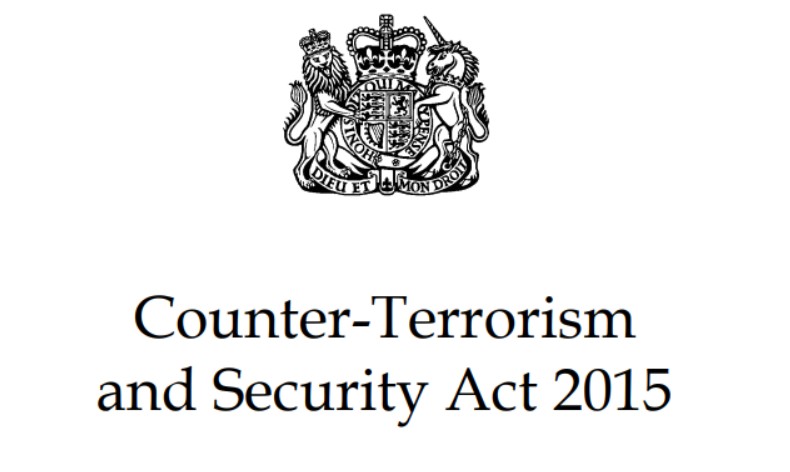Radicalisation is a term often used in discussions regarding security, terrorism, and extremist ideologies, but what laws are in place to guide how the UK addresses radicalisation? This question has become more crucial in recent years as the country works to combat terrorism and prevent individuals from being drawn into extremist activities. In this blog post, we will explore which law provides guidance on radicalisation in the UK, how it works, and its impact on communities and society.
What is Radicalisation and Why is it a Concern in the UK?
Before diving into the legal framework, it’s important to understand the concept of radicalisation. Radicalisation refers to the process by which an individual adopts extreme political, religious, or social beliefs that are often in opposition to the prevailing norms of society. In some cases, radicalisation can lead to violent extremism or terrorism.
In the UK, radicalisation is a serious concern due to its association with terrorism and the rising threat of groups like ISIS and Al-Qaeda. To prevent radicalisation, a strong legal and policy framework has been put in place.
Which Law Provides Guidance on Radicalisation in the UK?
In the UK, several key laws and frameworks guide radicalisation and aim to prevent individuals from being drawn into extremist ideologies. The most prominent piece of legislation is the Prevent Duty under the Counter-Terrorism and Security Act 2015.
Counter-Terrorism and Security Act 2015

The Counter-Terrorism and Security Act 2015 introduced a range of measures to prevent terrorism in the UK. One of its core components is the Prevent Duty, which imposes an obligation on public authorities, such as schools, universities, healthcare providers, and local governments, to identify individuals at risk of radicalisation and take steps to support them.
The Prevent Duty is based on the idea that early intervention can prevent individuals from being drawn into terrorism. It applies to institutions that work with vulnerable people, requiring them to:
- Identify those at risk of radicalisation.
- Offer support and intervention where necessary.
- Work with local authorities to provide guidance and safeguard vulnerable individuals.
How Does the Prevent Duty Work in Practice?
The Prevent Duty does not mean that every person who expresses extremist views is automatically considered a threat. Instead, it focuses on identifying individuals who show signs of being at risk of radicalisation. This can include:
- Social isolation: People who become withdrawn or have little social interaction.
- Adopting extreme views: Those who increasingly express controversial or intolerant views.
- Engaging in extremist online activities: Excessive involvement in extremist websites or forums.
Public authorities such as teachers, doctors, and social workers are trained to recognise these signs and intervene appropriately. However, the Prevent Duty has sparked controversy, with critics arguing that it could lead to discrimination or unnecessary surveillance.
How Does the Law Affect Educational Institutions?
Educational institutions play a significant role in the implementation of the Prevent Duty. Schools and universities are required to have strategies in place to spot the signs of radicalisation and provide support. Some key aspects of how schools are involved include:
- Training staff: Teachers and staff are given regular training to identify early warning signs of radicalisation.
- Curriculum changes: The curriculum may be adjusted to promote critical thinking and respect for diversity.
- Engagement with families: In some cases, schools may engage with parents or guardians if they believe a child is at risk.
Example of Educational Impact
A notable example of the law’s impact is the Channel Programme, a part of the Prevent strategy. It works with individuals who are considered to be at risk of radicalisation and offers tailored support to guide them away from extremist views.
| Channel Programme Support | Description |
| Mentorship | Providing support from mentors to guide individuals through the process of disengagement. |
| Psychological Support | Offering mental health services to individuals who may have psychological vulnerabilities. |
| Educational Support | Focusing on providing educational opportunities and fostering a positive outlook. |
What Are the Key Criticisms of the Prevent Duty?
While the Prevent Duty is intended to protect communities and individuals from harm, it has not been without its criticisms. Some of the main concerns include:

- Potential for Profiling: There is a fear that the law might encourage the profiling of certain groups, especially Muslims, based on their ethnicity or religious beliefs.
- Lack of Transparency: How individuals are flagged for intervention can often lack transparency, leading to fears of unjustified surveillance.
- Chilling Effect: Critics argue that the Prevent Duty might have a chilling effect on free speech, with individuals being cautious about expressing their views for fear of being flagged as extremists.
Is the Prevent Duty Effective?
While the Prevent Duty has been praised for providing a structured framework for identifying and intervening in cases of radicalisation, its effectiveness remains debated. Some studies suggest it has led to successful interventions, while others argue it has not significantly reduced the number of radicalised individuals.
What Other Legal Measures Address Radicalisation?
In addition to the Prevent Duty, other laws and measures in the UK seek to tackle radicalisation and terrorism. These include:
- The Terrorism Act 2000: This law provides the legal basis for the prosecution of individuals involved in terrorism and sets out the powers for investigating terrorism-related offences.
- The Terrorism Prevention and Investigation Measures (TPIMS): These measures allow the government to impose restrictions on individuals suspected of being involved in terrorism without the need for a criminal conviction.
Conclusion: How Effective is the UK’s Legal Framework on Radicalisation?
The question of which law provides guidance on radicalisation in the UK is answered with a combination of the Prevent Duty under the Counter-Terrorism and Security Act 2015 and other related measures. These laws are designed to prevent radicalisation through early intervention, but they are not without their challenges and criticisms. As the nature of radicalisation evolves, so too must the legal and social responses to it, ensuring a balance between security and individual freedoms.
While the Prevent Duty plays a central role in countering radicalisation, its ongoing effectiveness and fairness remain important points of debate.
FAQS on Radicalisation and Laws in the UK
What is the purpose of the Prevent Duty in the UK?
The Prevent Duty aims to prevent individuals from being drawn into terrorism by intervening at an early stage and providing support to those at risk of radicalisation.
Does the Prevent Duty apply to all sectors?
Yes, it applies to a wide range of public institutions, including schools, universities, healthcare providers, and local authorities.
Can the Prevent Duty lead to unfair treatment of individuals?
Yes, there are concerns that the Prevent Duty could lead to profiling and discrimination, particularly against certain ethnic or religious groups.
What are the signs of radicalisation to look out for?
Signs include social isolation, adopting extreme views, and excessive involvement in extremist activities online.
What happens to individuals identified under the Prevent Duty?
They may be offered support through programmes like the Channel Programme or be referred for further investigation.






